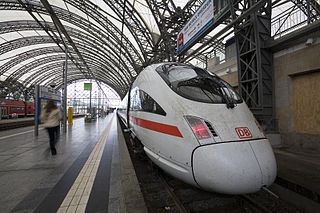Sustainable Transportation and Intercity High-Speed Rail
In response to my recent piece on mass transit, frequent contributor and very bright fellow Tim Kingston writes:
I fully support mass transit within an urban area — subways, etc. What I don’t support is intercity public transportation like the California high speed rail boondoggle. This project will take years to complete, follow a politically determined route where big shot politicians will ensure the transit stops are in their districts and it will cost so much money you could probably buy a Mercedes for each California commuter with all that loot.
As always, Tim, thanks. I hear you. You’ll travel a long way to find someone who sees as much corruption in the public sector as I do. But, if I may, two quick points:
#1: Both the Asians and the Europeans have done high-speed rail in a big way, with some pretty impressive results.
#2: I live in Southern California, and I see the huge cost, financially and environmentally, that my neighbors pay to get, via air or car, to the two areas to which so many millions of us travel each year: the San Francisco Bay Area about 350 miles northwest of here, and Las Vegas, about 250 miles to the northeast. Do you know that we can take (the US rail system) Amtrak to Las Vegas, New Mexico, population 13,600 (the annual tourist traffic of which I could host in my living room), but not to Las Vegas, Nevada, population 560,000, with annual tourist traffic of 37 million, about twice the entire population of the state of New York?
Not that I encourage tourist traffic to Las Vegas, but can you imagine how many more people I could bring into Sin City if I could get them there quickly and comfortably from Southern California?
And let’s consider San Francisco. You can get on Amtrak from here and head northwest, getting fairly quickly …to Salinas. That’s great if you’re a fan of John Steinbeck (which I happen to be). But if San Francisco is your destination, it’s an 11-hour stint that includes a series of trains and buses. No sane person would do that to himself.
Tim, if I paid you to design a more ludicrous use of rail travel, I would defy you to have conceived it.
But the saddest part of this whole conversation is that you’re right: if we eventually get what we should have had decades ago, most of the money will go straight into lining the pockets of the super-rich, their super-smart lawyers, and the politicians they own.


..and running cost of Empty trains even higher. This (criticism) is not about what good mass transit is and when, but I would call this escapism. You cant suggest a mass transport when you fail to improve personal transport. It can not be this simple. I would not harp on How a lot of Alternate energy would start making sense when we addressed Most basic issues of Energy consumption and conservation.
I was concerned a few years ago when millions were going to be spent for “Light Rail Service” here between Tampa and Orlando, Florida. The land purchase and track laying and station building were the bug expenses. I said it was a bad concept, just use the Amtrak rails, they only run two trains each day. and there are beautiful 1920 antique stations to use All they needed was the special trolley looking self propelled cars. but when the referendum failed and no contractors were going to get the multi. million dollar building contract interest wained..
Yeah, we tried an inter-city transit system up here. It was supposed to connect Salem (our State Capital), Beaverton, Tigard, and Portland. I guess it still runs, but there have been so many complaints about train horns and “secure” rail crossings that I don’t even know if it is still a viable commute alternative. It could have been a wonderful expansion of the local Tri-Met system if it hadn’t had so much push back from the NIMBY croud.
In the vein of priorities informing any business decision, Tim is spot on. The world trend of populations condensing into the cities is well studied and reported upon. Omitting the discussion of whether states can do good work in building inter-city infrastructure, I would opine that first and foremost is the much larger problem of future transportation within our cities.